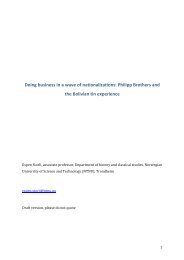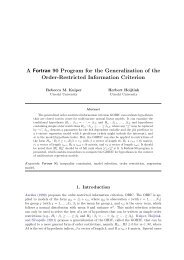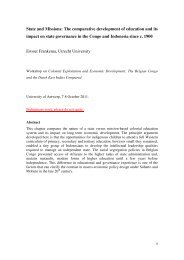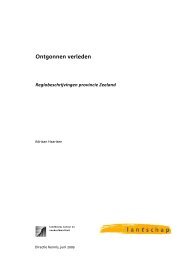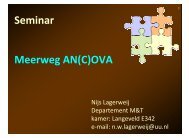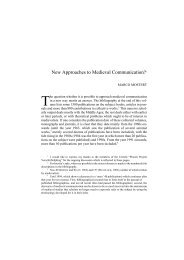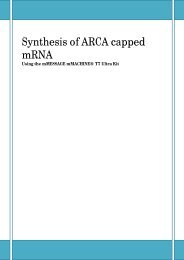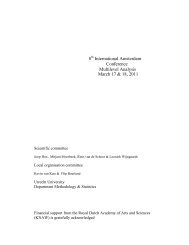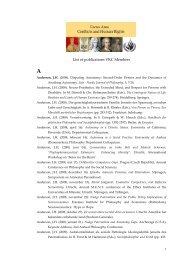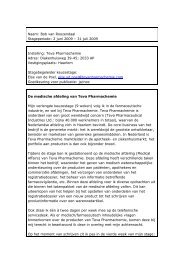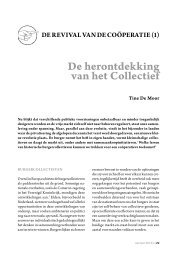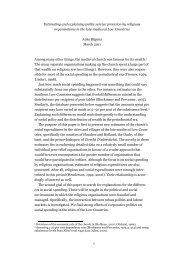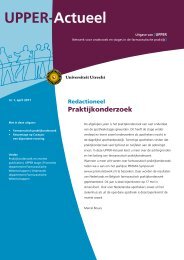Family Structure and Business Organization: Sephardic ... - Partner
Family Structure and Business Organization: Sephardic ... - Partner
Family Structure and Business Organization: Sephardic ... - Partner
Create successful ePaper yourself
Turn your PDF publications into a flip-book with our unique Google optimized e-Paper software.
Draft – Not for circulation without permission<br />
places, but also among different communities who lived side by side. Here I return to look at<br />
Ergas & Silvera with a magnifying lens <strong>and</strong> also widen my perspective to include the marriage<br />
contracts of several among their peers in order to assess how unique marriage arrangements<br />
influenced the structure of <strong>Sephardic</strong> partnerships.<br />
While it has become accepted among economic historians to highlight the incredible<br />
organizational diversity of early modern European commerce <strong>and</strong> to question conventional<br />
accounts that described the transition from family partnerships to charted join-stock companies<br />
<strong>and</strong>, eventually, multinational corporations, little has been written about how particular kinship<br />
structures may help us underst<strong>and</strong> the organization of trading diasporas. This chapter shows how<br />
<strong>Sephardic</strong> merchants in Livorno maintained customs that for the most part had been dismissed in<br />
Italy since the late Middle Ages – namely, consanguineal marriages <strong>and</strong> betrothal gifts – to<br />
solidify their family partnerships <strong>and</strong> overcome some of the detrimental effects that derived from<br />
their exclusion from the Catholic covenant. It also begins to elucidate how a business model that<br />
revolved around a core of immediate relatives extended itself well beyond this circle to become a<br />
vehicle of cross-cultural trade. In so doing, here <strong>and</strong> in the next chapters I begin to tackle directly<br />
the central question of this study, namely, how did <strong>Sephardic</strong> merchants secure the cooperation<br />
of relatives, coreligionists, <strong>and</strong> strangers for the purpose of exp<strong>and</strong>ing their trading networks.<br />
5.1 Marriage, Dowry, <strong>and</strong> Merchants’ Capital<br />
Kinship structures among the Western <strong>Sephardic</strong> diaspora differed significantly from<br />
those of the Christian population in early modern Europe. To begin, Jewish endogamy was kinbased<br />
<strong>and</strong> not geographically based. More specifically, Jewish customs encouraged rather than<br />
proscribed marriages among close kin. While exogamous marriages prevailed in Christian<br />
Europe from the late Middle Ages to the mid eighteenth century, consanguineal marriages were<br />
the norm among Sephardim. 4 In a summa of precepts compiled for those New Christians who<br />
were joining the <strong>Sephardic</strong> congregation in Amsterdam <strong>and</strong> elsewhere, rabbi Menasseh Ben<br />
Israel regarded marriages between patrilinear first cousins <strong>and</strong> between uncles <strong>and</strong> nieces as the<br />
most preferable. 5 His recommendation soon clashed with the prohibition of marriages between<br />
cousins <strong>and</strong> nieces issued by the Estates of Holl<strong>and</strong> in 1656 <strong>and</strong> again in 1712 (although the<br />
reiteration of the ban suggests that it may have been disregarded). 6 In early modern Italy, in<br />
contrast, there existed no legal obstacles of this sort because Jewish law prevailed in matters of<br />
4 Jewish law did not prescribe marriages among relatives, but the Bible gives numerous examples of them:<br />
Abraham married his half-sister; Isaac, Esau <strong>and</strong> Jacob married their cousins; Nahor married a niece; Moses’ father<br />
married his aunt. See EPSTEIN 1942: 146; Encyclopaedia Judaica 1971-72, XI: coll. 1051-2; MENACHEM 1974: 361.<br />
From 1215 to 1917, canon law forbade marriages within the fourth degree of consanguinity. Before the middle of<br />
the eighteenth century, Catholic authorities were reluctant to grant dispensations for marriages within the third<br />
degree. Indeed, consanguineous marriages, such as those between first cousins or between uncle <strong>and</strong> nices, appear to<br />
have been rare in late-fifteenth-century Florence (MOLHO 1994: 261-6) as well as in early modern Spain (CASEY<br />
2007: 115-6) <strong>and</strong> Southern Italy (DELILLE 1985: 227-37), although in all these cases families devised ways of<br />
intermarrying within small circles. The Catholic Church was more lenient in issuing dispensations to the inhabitants<br />
of isolated communities, such as Alpine villages, where it often proved impossible to avoid consanguineal marriages<br />
(MERZARIO 1981). Protestant churches were equally, if not more opposed to consanguineal marriages. On exogamy<br />
as the rule in Christian Europe during the early modern period, see SABEAN 1998 <strong>and</strong> MATHIEU–SABEAN–TEUSCHER<br />
2007.<br />
5 BEN ISRAEL 1645-47, part V (“Tratado do matrimonio”): 82.<br />
6 SWETSCHINSKI 2000: 18-9.<br />
2



